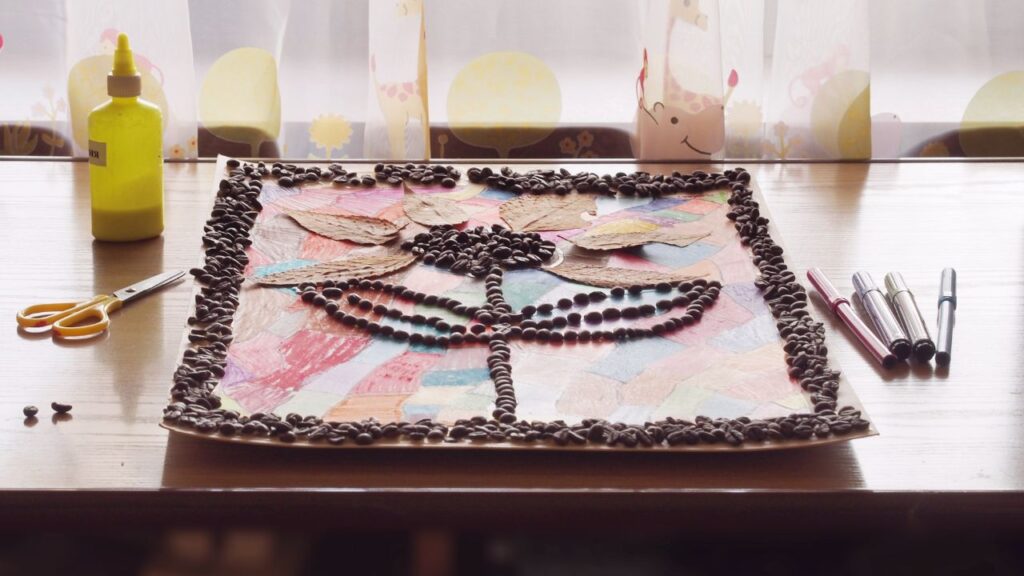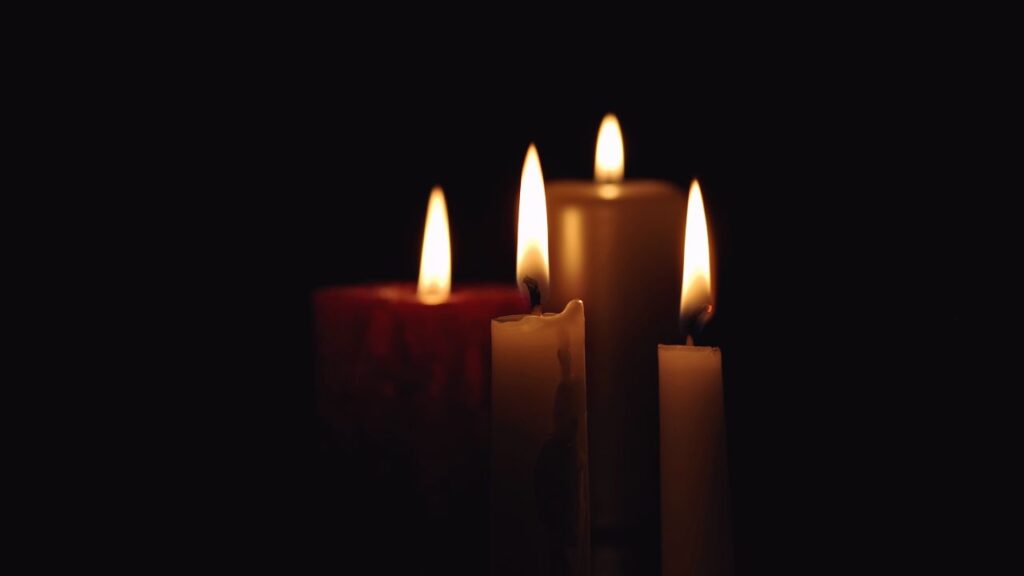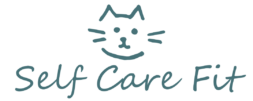Staring at a blank page? You’re certainly not alone. Even professional writers face creative blocks, but picture writing prompts offer a powerful solution that speaks directly to your emotional core.
In fact, a single image can inspire ten different writers to create ten completely unique stories, showcasing the transformative power of visual writing prompts. These photo writing prompts are particularly effective because they tap into your natural ability to connect with pictorial cues, making the writing process more intuitive and personally meaningful.
Whether you’re looking to explore your emotions, process experiences, or simply break through creative barriers, these prompts can guide you toward deeper self-reflection and personal growth. The best part? You don’t need elaborate setups or expensive materials – the most powerful prompts often come from accessible subjects in your own home or community.
More Journal Inspiration:
7 Best Bullet Journal Sizes in 2025 (With Size Comparison Guide)
45 Themed May Bullet Journal Ideas You Never Thought Of
August Bullet Journal Ideas: Simple Spreads for Busy People
Mirror Reflections: Exploring Self-Image Through Picture Prompts

Looking into a mirror creates a powerful psychological moment – a face-to-face encounter with yourself that can unlock emotional revelations beyond simple reflection. Unlike ordinary picture writing prompts, mirror images offer a direct window into your unconscious self-perception. Research shows that negative self-feelings dramatically affect how we interpret our mirror image, often creating a vicious cycle of self-criticism.
How Mirror Images Reveal Inner Thoughts
The way you perceive your reflection isn’t simply about appearance. Studies reveal that individuals with negative self-image actually look longer at their own faces, possibly indicating a more critical self-examination. Moreover, our emotional response to our reflection often reveals deeply held beliefs about ourselves that we might not consciously recognize.
When gazing at your reflection, your brain processes your image using similar neurocognitive mechanisms as when viewing others. This creates a unique opportunity for objective self-observation. Additionally, research suggests that people with higher self-confidence unconsciously recognize slightly enhanced versions of themselves more quickly than accurate ones, highlighting how self-perception colors what we literally see.
Writing Techniques for Self-Image Exploration
Transforming mirror gazing into structured writing exercises amplifies its emotional benefits. Try these techniques:
- Mirror Reflection Journaling: Set aside 10 minutes to observe yourself in a mirror without judgment, then immediately write about what you noticed emotionally rather than physically.
- Temporal Comparison: Choose three photos of yourself across different life stages and write about your emotional response to each image.
- Self-Dialogue Writing: After mirror gazing, write a conversation between your present self and the reflection you observed.
Regular mirror-based writing practice helps process emotions, improves self-awareness, and fosters cognitive restructuring. Furthermore, this combination of visual reflection and written expression creates a scaffolded approach to emotional exploration that makes challenging feelings more manageable.
Mirror Prompt Questions That Spark Emotional Insights
To maximize the effectiveness of your mirror-based picture writing prompts, ask yourself these questions while looking at your reflection:
“What emotions am I holding in my expression that I wasn’t consciously aware of?”
“If my reflection could speak freely, what would it tell me about my current emotional state?”
“How does the person I see differ from how others might perceive me?”
These visual writing prompts help you recognize emotional patterns, subsequently leading to improved self-understanding and emotional regulation. Through consistent practice, you’ll notice your capacity to feel and accept a broader range of emotions naturally increases.
Nature’s Pathways: Visual Prompts for Life Transitions

Pathways depicted in nature photographs offer powerful visual metaphors for life’s transitions. These picture writing prompts create immediate emotional resonance, as our brains naturally connect path imagery with our personal life trajectories. Path visualization taps into universal symbolism that even young children intuitively understand—roads diverging, obstacles in the way, or light at the end of a tunnel.
Identifying With Paths in Pictures
We begin developing patterns for navigating transitions early in life, often connected to our early attachment experiences and sense of security. Visual writing prompts featuring paths allow you to externalize these internal navigation systems. Consequently, when you see a winding forest trail or a fork in the road, your brain automatically processes it as representing choices and life direction. This makes path pictures especially effective for emotional self-discovery since they operate at both conscious and unconscious levels.
Writing About Crossroads Using Visual Cues
Crossroads in pictures serve as especially potent visual writing prompts since they represent moments of uncomfortable indecision or significant life changes. Generally speaking, crossroads symbolism appears across cultures as sites for meaningful encounters and transformation. When writing about crossroad images, focus on specific questions that bridge different areas of tension in your life:
- “What possibilities exist if I take this unexplored route?”
- “What barriers or fallen trees might I encounter along each path?”
- “How might this choice connect my past decisions with future aspirations?”
Emotional Responses to Path Imagery
Path-based journal picture prompts activate physiological and behavioral response systems in ways verbal prompts cannot. According to bio-informational theory, mental imagery of emotionally charged stimuli activates associative networks that overlap with actual experiences. Therefore, your emotional reactions to path imagery—whether excitement, fear, or curiosity—provide valuable insights into your feelings about real-life transitions. These emotional responses often manifest physically through heart rate changes, skin conductance, and respiratory patterns.
Therapeutic Benefits of Path Visualization
Path metaphors create safe spaces for exploring difficult transitions. Throughout therapeutic practice, visualizing yourself on a path representing your life’s current state helps externalize internal struggles. Notably, this visualization technique enables you to identify patterns in how you respond to change and strengthen your emotional resilience. The practice also helps you recognize when you’re avoiding certain feelings about transitions, since emotions like fear, sadness, grief, and joy often arise during major life changes.
Although visualization might seem simple, it provides sophisticated emotional processing tools that help you navigate life’s inevitable transitions with greater awareness and purpose.
Abandoned Places: Picture Prompts for Processing Loss

Abandoned buildings and empty spaces capture the essence of loss in ways that words alone cannot express. These haunting settings serve as powerful picture writing prompts that create an immediate emotional connection to feelings of absence, grief, and the passage of time.
What Empty Spaces Reveal About Our Emotions
Empty spaces mirror our internal emotional landscapes, especially after experiencing loss. The cracked walls, peeling paint, and dust-covered surfaces of abandoned places create a physical manifestation of emotional emptiness. In reality, we often carry these “abandoned rooms” within us—internal spaces once filled with connection, now silent and still.
These visual writing prompts work effectively because they externalize what’s happening inside you. For instance, vines snaking through floorboards or nature reclaiming a structure symbolize how grief transforms over time. Furthermore, the silence in abandoned places parallels the quietude that often accompanies profound loss, creating a resonant emotional experience when using these images as prompts.
Writing Through Grief Using Visual Anchors
Photo writing prompts featuring abandoned places provide concrete anchors for processing abstract feelings. Instead of directly confronting overwhelming emotions, you can explore them through the safer lens of an external image. As a result, this approach creates emotional distance that makes difficult feelings more manageable.
Try these techniques with abandoned place picture prompts:
- Object-Based Writing: Focus on a single object in the abandoned space and write about what it represents emotionally
- Sensory Exploration: Describe what you imagine the abandoned place would feel, smell, and sound like, connecting each sense to an emotional response
- Dialogue Creation: Write a conversation between yourself and the empty space, allowing it to become a character in your emotional processing
Additionally, these prompts help transpose difficult truths from mind to paper, making them more tangible and easier to address. Hence, using journal picture prompts regularly creates a consistent practice for processing complex feelings.
Finding Meaning in Absence
The poignant beauty found in abandoned places highlights an important truth—absence itself can become meaningful. Despite the emptiness, abandoned spaces hold stories and memories that refuse to disappear. Above all, these visual writing prompts help you recognize that loss transforms rather than eliminates what was meaningful.
Writing about abandoned places often reveals unexpected perspectives on grief. In fact, many find that these prompts help them move beyond seeing only what’s missing to appreciating what remains. Likewise, the juxtaposition of decay and resilience in abandoned structures offers powerful metaphors for the grief process itself.
Through consistent practice with these picture prompt exercises, you’ll develop a richer emotional vocabulary for processing loss—finding words for feelings that previously seemed beyond language.
Weather Systems: Visual Writing Prompts for Emotional Storms

Weather patterns reflect our emotional landscapes in remarkably intuitive ways. Just as storms, sunshine, and fog cycle through our environment, similar patterns of intensity and calm cycle through our emotional lives. Visual writing prompts featuring weather systems create powerful opportunities for emotional self-discovery by providing external imagery for internal states.
Connecting Weather Imagery to Emotional States
Our emotional experiences often parallel weather patterns – turbulent storms mirror anger, fog represents confusion, and sunshine correlates with joy. Yet, these connections run deeper than simple metaphors. Importantly, we make decisions about our days and lives based on weather conditions, just as our emotions influence our choices. The weather in our surroundings affects our mood profoundly, whether we consciously notice or not.
Weather metaphors work effectively as picture prompts because they provide a natural vocabulary for complex feelings. In essence, describing emotional states as weather patterns helps externalize internal experiences, making them more tangible and easier to process. Similarly, weather imagery creates distance from overwhelming emotions while simultaneously providing powerful sensory details.
Techniques for Writing Through Emotional Turbulence
To use photo writing prompts featuring weather effectively:
- Create an “Emotional Weather Report” by identifying which weather pattern best represents your current mood (stormy, sunny, cloudy)
- Explore factors contributing to your emotional weather including recent experiences, thoughts, or physical sensations
- Consider actions or self-care practices that might help navigate or shift your emotional climate
Through these techniques, you build emotional fitness by regularly checking your emotional state using weather metaphors. In turn, this practice cultivates deeper self-awareness and the ability to recognize emotional patterns over time.
Using Storm Pictures to Process Difficult Feelings
Storm imagery provides exceptionally useful journal picture prompts for processing intense emotions. Typically, we view emotions like an angry storm – fierce, overwhelming, and temporarily knocking us off center. Nevertheless, storms also herald renewal, clearing dust and re-energizing the environment.
By writing about storm imagery, you acknowledge that emotions, like weather, are temporary conditions rather than permanent states. Even so, this doesn’t diminish their significance. Through visual writing prompts featuring storms, you practice accepting difficult feelings without being consumed by them, recognizing each emotional state as a passing weather pattern.
This approach ultimately helps transform emotional storms into valuable resources. After all, difficult emotions often signal something important requiring attention, just as a storm warns us to seek shelter.
Hands Reaching: Picture Writing Prompts for Connection and Isolation

Hands capture the essence of human connection in ways few other images can. As picture writing prompts, hand imagery directly taps into our innate understanding of touch, connection, and emotional expression. Historically, hands have symbolized solidarity, promises, and communication across cultures, making them uniquely powerful visual writing prompts for emotional self-discovery.
The Symbolism of Hands in Visual Prompts
The universal nature of hand symbolism makes them exceptionally effective picture prompts. Fundamentally, hands represent balance – we possess two hands, reflecting duality and the opposing parts of our conscious and unconscious minds. In Chinese culture, for instance, the left hand symbolizes yin energy while the right represents yang energy, embodying perfect balance. Additionally, hands function as the physical tools that transform our thoughts and ideas into reality, bridging our inner and outer worlds.
Hands communicate without words, yet tell complete stories. They reveal identity—from the long fingers of a pianist to the rough hands of a laborer—making them powerful symbols for exploring personal narrative. Consequently, journal picture prompts featuring hands can unlock deeper emotional truths about yourself and your relationships.
picture writing prompts and Exercises for Exploring Relationships
Try these exercises using pictures for writing prompts featuring hands:
- Hand Detail Study: Choose a photograph showing hands in detail. Write about what these hands have experienced, created, or touched. Consider scars, shape, and position.
- Connected Hands: Find images of hands reaching toward each other. Write about a relationship in your life—either one you have or one you desire—using the hand positioning as metaphor.
- Empty Hands: Use photos of open, empty palms as writing picture prompts to explore feelings of loss or potential.
From Isolation to Connection Through picture writing prompts
Hand imagery provides a powerful bridge between isolation and connection. Throughout the recent pandemic, pictures of hands reaching toward each other gained special significance as symbols of our collective longing for connection. Accordingly, writing about these images helps process feelings of loneliness while affirming our need for human contact.
Looking at pictures of connected hands while feeling isolated creates a therapeutic contradiction that sparks emotional insight. Thus, these journal picture ideas help externalize internal struggles with connection. Furthermore, writing regularly with hand imagery establishes a practice of moving from isolation toward emotional connection, both with yourself and others.
Doorways and Windows: Picture Writing Prompts for New Beginnings

Doorways represent powerful symbolic thresholds in our psychological landscape. As picture writing prompts, they enable exploration of transitions, beginnings, and the courage required to step into the unknown. Doorway imagery connects to our subconscious understanding of boundaries, creating immediate emotional resonance when used as journal picture prompts.
Threshold Imagery and Emotional Transitions
Doorways and openings serve as symbolic structures with profound significance in daily life. Essentially, they provide transition points to change. A door is not merely an architectural element—it represents who you are. The quality, texture, color, and welcoming nature of a doorway in a picture prompt creates a projection surface for your current emotional state.
Standing at a threshold symbolizes a moment between two distinct phases of life. Sometimes, your hesitation at doorways in visual writing prompts reveals fears about confronting difficult emotions or anxiety about the future. Yet these images provide safe spaces to explore transitions at your own pace.
Writing Through Fear of Change
Fear often accompanies beginnings—it’s the marker telling you you’re getting close to something meaningful. When using doorway pictures for writing prompts, you might notice resistance, which signals authentic emotional territory worth exploring.
To work through transition fears, try these doorway-based techniques:
- Create a script describing your fear of what lies beyond the door, varying it by highlighting key phrases or writing in different colors
- Imagine yourself walking through a hallway with many doors, choosing which to open and exploring emotions that arise
- Use the door metaphor to understand boundaries, transitions, and moments of mindfulness
Remember, “releasing a book is like being chained to a lamppost naked in your neighborhood and the sun is about to come up”. This vulnerability parallels any significant life change—the emotions are intense, nonetheless worthwhile.
Visualizing Opportunities Through Doorway picture writing Prompts
Doorway writing picture prompts help externalize internal conflicts about beginnings. Furthermore, they provide structure for processing emotions around change. Whenever you work with doorway imagery, consider drawing your own door using a tri-folded piece of paper—the front representing external appearance, the inside revealing what lies beyond.
Afterward, ask yourself: “Is this door meant to be opened? Who can open it? Is there a lock or key?”. Otherwise, try walking through an actual doorway to create a mental transition between activities—researchers found people “were two to three times as likely to forget what they were supposed to do after walking through a doorway”, demonstrating how powerfully thresholds affect our psychological state.
Childhood Objects: Picture Writing Prompts for Inner Child Work

A faded stuffed animal or forgotten toy can unlock emotional doorways long sealed shut. These familiar items serve as powerful picture writing prompts for inner child work, offering tangible connections to past versions of yourself that textual prompts alone cannot replicate.
Reconnecting With Past Emotions Through Objects
Childhood objects carry emotional imprints that remain powerful throughout adulthood. Furthermore, these items create immediate visceral responses when used as photo writing prompts. The inner child healing process benefits from revisiting these objects, recognizing their significance, and understanding their impact on who you are now. In addition, engaging with childhood items—whether through photographs or the actual objects—can help you acknowledge emotions that were previously suppressed or overlooked.
Writing Dialogues With Your Younger Self
Finding a photograph of yourself as a child—particularly around age eight or at an age where you experienced significant emotional events—creates a remarkably effective picture prompt. To begin, place your hand on your heart, take three deep breaths, and address your younger self with compassion: “It’s ok sweetheart, I’m here”. Now, imagine a conversation between your adult self and the child in the photograph. Importantly, write this dialogue without judgment, allowing your inner child to express needs that might have gone unmet.
Healing Childhood Wounds Through Visual Prompts
Visual writing prompts featuring childhood objects facilitate recognition that the part of you who is still a child needs love and support. Specifically, these journal picture prompts create safe spaces to review past experiences with kindness. Eventually, you’ll recognize that while you couldn’t control your childhood circumstances, you now have choices about how you respond. For many people, childhood items represent both joy and pain—a duality that pictures to write about can help reconcile.
Object Imagery as Emotional Time Machines
Childhood objects function as emotional time machines, transporting you instantly to earlier states of being. A single item in a photograph might transport you to specific memories, almost allowing you to time-travel emotionally. Overall, art therapy using visual writing prompts proves especially effective because it communicates with the part of the brain where emotions are stored. Finally, regularly working with these prompts helps identify objects, activities, or places that provided comfort during childhood—elements you can deliberately incorporate into your adult life for ongoing emotional support.
Contrasting Landscapes: Picture Writing Prompts About Emotional Duality

Contrasting landscape images capture the complexity of our emotional lives by presenting visual opposites within a single frame. These picture writing prompts reflect the reality that we often experience conflicting feelings simultaneously. Just as a photograph might show both shadow and light, our emotional landscapes contain joy alongside sorrow, hope intermixed with fear.
Exploring Contradictory Feelings Through Imagery
Contrasting visual elements serve as powerful metaphors for emotional duality. Indeed, juxtaposing warm and cool colors or bright and muted tones creates dynamic tension that mirrors our internal conflicts. For instance, a sunset photograph showing both fiery sky and darkening earth creates an opportunity to explore emotional transitions. Yet these contrasting elements don’t weaken your emotional experience—they enrich it by acknowledging the full spectrum of your feelings.
Writing Techniques for Emotional Complexity
When using contrasting landscapes as journal picture prompts, try these approaches:
- Focus on the boundary line between opposing elements in the image
- Identify which contrasting element feels most resonant, then explore why
- Write from both perspectives within the image, switching viewpoints halfway
On the other hand, creating emotional cartography helps map complex feelings. In contrast to simple emotional labels, this technique encourages detailed description of your emotional landscape, including its contradictions and complexities. Furthermore, writing about visual contrasts helps externalize internal conflicts, making them easier to understand and process.
Finding Balance Through Visual Contrasts
Contrasting visual writing prompts ultimately reveal that opposing emotions can coexist productively. In effect, they train your brain to recognize the value in emotional complexity. Thereafter, you’re better equipped to handle seemingly contradictory feelings in real life. However, the goal isn’t eliminating contradiction but finding balance within it—much like a photograph showing both storm clouds and sunshine captures nature’s own emotional duality.
By comparison, working regularly with these picture prompts builds emotional resilience, helping you recognize that opposing feelings represent wholeness rather than confusion.
Masked Figures: Picture Writing Prompts for Authentic Self-Expression

Masks paradoxically both hide and reveal our authentic selves. As picture writing prompts, masked figures offer unique opportunities to explore emotions we often conceal from others—and occasionally from ourselves. Different from mirrors or pathways, mask imagery creates a safe distance between you and vulnerable feelings, making them easier to confront.
What Masks Reveal About Our Hidden Selves
Research suggests masks don’t simply conceal; they simultaneously express aspects of identity related to moral injuries, grief, and perceived disconnection from society. In fact, the motif of masks explores themes of identity, deception, and true self hidden beneath societal expectations. Interestingly, Japanese Noh theater uses wooden masks deliberately designed to be expressionless, though subtle movements bring out hidden emotions carved within. This demonstrates how masks, at first glance symbols of concealment, often unintentionally reveal our deepest truths.
Writing Exercises to Uncover Authentic Emotions
To use masked figures as visual writing prompts, try these exercises:
- Write a reflection piece about what you hide behind your metaphorical mask
- Create a poetic list titled “The Masks We Throw Away”
- Identify an aspect of your authentic self you’ve hidden from others and steps toward embracing it fully
Consider that art therapy interventions, including mask-making, effectively channel emotional expression. For instance, military personnel with post-traumatic stress symptoms use mask creation to express and confront distressing thoughts non-verbally. Coupled with writing, this approach offers unique healing potential.
From Concealment to Revelation Through Imagery
Masks created in initial therapy stages express more negative emotions than those made later. Correspondingly, the transformation within a person’s art reveals their emotional journey—at first concealing pain, later expressing genuine feelings. Upon reflection, a mask becomes not a barrier but a portal to authenticity.
The transformative power of journal picture prompts featuring masks lies in their ability to make visible what we cannot express verbally. As a result, writing with mask imagery creates pathways to authentic self-expression previously inaccessible through conventional means.
Water Reflections: Picture Writing Prompts for Emotional Depth

Water symbolizes our subconscious mind, vast and largely unexplored yet deeply influential in our emotional lives. Picture writing prompts featuring water reflections offer unique opportunities to access emotional depths that often remain hidden beneath everyday awareness. Through these visual prompts, you gain entry to areas of yourself typically obscured by surface-level thinking.
Surface vs. Depth in Emotional Exploration
In Taoist tradition, water represents wisdom and adaptability, taking the form of whatever contains it. Meanwhile, psychologically speaking, water serves as the archetypal symbol for both individual and collective unconscious. This duality makes water reflections ideal picture prompts for exploring emotional complexity. Just as most deep waters remain unexplored, much of your subconscious mind stays hidden beneath the surface, yet still holds power over your beliefs and decisions. Initially, you might notice only surface emotions, but water imagery encourages exploration beyond immediate reactions.
Writing Techniques for Diving Deeper
To use water-based photo writing prompts effectively:
- Place a water reflection image where you can easily see it, then describe what you notice, looking into corners for previously unseen details
- Close your eyes and imagine sitting beside this body of water, noting your physical sensations
- Write spontaneously about what this water is saying to you
Primarily, these techniques help you express emotions without judgment, creating space to recognize patterns and triggers. Regular journaling with visual writing prompts allows you to process emotions, understand them better, and manage them more effectively.
Using Water Imagery to Access Subconscious Feelings
Many people explain their emotional processing using metaphors of surface and depth—”diving into,” “drilling down,” and “digging deeper”. Undoubtedly, water imagery facilitates this vertical movement in emotional awareness. Some find that surface-level approaches only “scratch the surface” or remove “dental stones” rather than addressing deeper issues. Analogous to eating whole grain bread versus sugar for sustained energy, working with water picture prompts creates lasting emotional insights rather than temporary relief. These journal picture ideas ultimately help bring suppressed emotions “up and into the light”, transforming what lies beneath the surface into conscious awareness.
Empty Chairs: Journal Picture Ideas for Addressing Absence

An empty chair stands as a powerful symbol of absence, creating immediate emotional impact through what isn’t there rather than what is. These picture writing prompts offer tangible ways to address loss when words alone feel inadequate. Primarily, they provide safe spaces to explore unresolved feelings toward those no longer present in our lives.
Writing Through Loss Using Empty Space Imagery
Empty chair imagery creates effective visual writing prompts because of our brain’s natural tendency to complete incomplete visual elements. As soon as you see an empty chair, your mind automatically fills in who might have sat there before. First thing to remember, this cognitive principle of closure helps externalize internal grief, making complex emotions more tangible and processable.
Empty chairs work particularly well as picture prompts because they represent both physical and emotional absence simultaneously. To begin working with these prompts, photograph an empty chair that holds significance—perhaps at a dining table, in a favorite reading nook, or beside a window.
Dialogue Exercises With Absent Figures
Expressive therapies using empty chair work help clients process complex grief when relationships involved mixed feelings. To clarify, these techniques aren’t about reimagining reality, but about revising your relationship with absence. Try these approaches:
- Mindfully visualize the absent person sitting there, including mannerisms and clothing details
- Write a letter expressing things left unsaid, then read it aloud to the empty chair
- Create a dialogue allowing yourself to speak and then respond as the absent figure
Finding Closure Through Visual Prompts
Using empty chair journal picture ideas doesn’t erase absence but transforms how you carry it. At length, these exercises help integrate difficult emotions into your overall narrative. The goal isn’t eliminating grief but finding ways to honor absence while continuing forward.
For many, the simple act of writing thoughts while focused on an empty chair validates feelings and acknowledges ongoing emotional work. To be sure, this process differs for everyone—you might need to revisit these photo writing prompts multiple times as your relationship with absence evolves.
Light Through Darkness: Picture Writing Prompts About Hope

Light breaking through darkness stands as the most universal symbol of hope across human experience. These picture writing prompts capture the powerful moment when illumination pierces shadow, creating visual metaphors for emotional resilience and possibility. Much like emotional healing itself, light doesn’t eliminate darkness completely—it transforms it into something meaningful.
Contrast Techniques in Emotional Writing
The interplay between light and shadow creates emotional depth impossible to achieve with either element alone. Primarily, the contrast itself becomes the story. Much like writers use light to highlight what matters most, your emotional writing gains power when you acknowledge both light and darkness. By focusing on the boundary between illuminated and shadowed areas in picture prompts, you identify emotional transition points in your own experience.
Several writers use contrasting light imagery to process complex feelings:
- Focus on a single ray breaking through clouds
- Photograph shadows cast by window light
- Capture dawn or dusk transition moments
Indeed, “without darkness, the light has nothing to reveal”. These contrasts help externalize internal emotional states, making abstract feelings tangible through visual representation.
Finding Hope in Visual Symbolism
Light consistently symbolizes truth, revelation, and knowledge across cultures. Throughout history, light imagery represents good while emerging from darkness signifies transformation. Following a period of emotional difficulty, visual writing prompts featuring light breaking through darkness offer powerful symbols for personal renewal.
Sunrises and rainbows serve as traditional visual symbols of hope, along with spring imagery like flower buds beginning to bloom. Consistently, these symbols work because they connect with universal human experience rather than abstract concepts.
Writing Toward Emotional Breakthrough
Pictures of light emerging from darkness create effective journal picture prompts because they mirror the actual process of emotional healing. Initially, you might see only darkness, but gradually, with sustained attention, points of light emerge. Additionally, this visual progression helps track emotional growth over time.
Consider trying “healing light meditation” where you visualize warm light filling different parts of your body while writing about emotional sensations. This approach combines visual imagery with expressive writing, consequently enhancing both processes. In effect, these picture prompt exercises build emotional resilience for facing life’s inevitable shadows while maintaining hope for tomorrow’s light.
Picture Writing Prompts Conclusion
Pictures have the ability to bypass logic and tap directly into emotion, making them one of the most effective tools for sparking creativity. Whether you’re journaling for self-discovery, storytelling, or personal growth, visual prompts offer a limitless well of inspiration.
The more you engage with picture writing prompts, the more you’ll train your mind to see stories and meaning everywhere—transforming not just your writing but also how you observe the world around you. So grab a pen, choose a picture, and let your creativity flow. Your next great insight or story is just one image away.
FAQs About Using Picture Writing Prompts
How do I choose the right picture writing prompts?
Start with an image that sparks emotion or curiosity. If you feel drawn to it, chances are it has a story waiting to be uncovered. You can also select pictures based on a specific theme or mood you want to explore.
What if I get stuck and can’t think of anything to write?
Try freewriting—set a timer for five minutes and jot down anything that comes to mind about the image, even if it seems unrelated. Describe what you see, what emotions it evokes, or what could be happening outside the frame.
Can I use picture writing prompts for more than just creative writing?
Absolutely! Picture prompts are great for self-reflection, journaling, poetry, mindfulness exercises, and even as a tool for overcoming writer’s block in business or academic writing.
Related: 75 Journal Ideas for Students To Spark Daily Writing
Should I interpret the picture writing prompts literally or use it as a jumping-off point?
There’s no right or wrong way. Some writers use the image as a direct scene in their story, while others take inspiration from its mood, colors, or a single detail that sparks an unrelated idea.
Where can I find good picture writing prompts?
You can use personal photos, stock image websites, old magazines, postcards, or even AI-generated images. The key is to find visuals that make you think and feel something.


